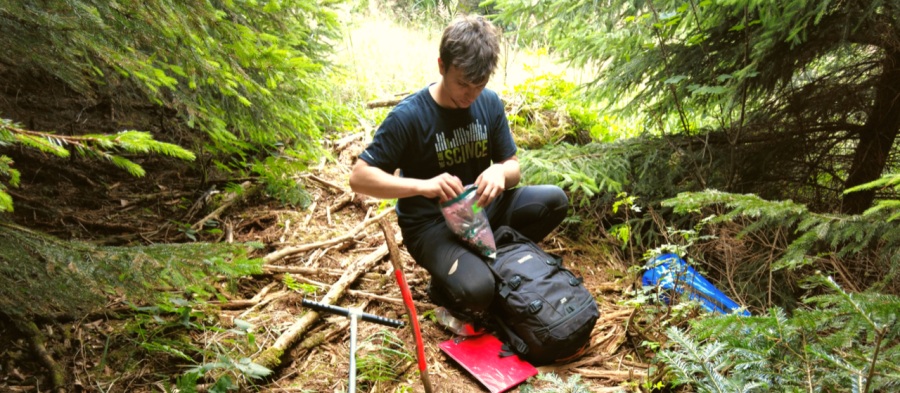Geographers finishing up pool mapping in the Beskydy Mountains
Landscape as a silent witness of human activity is starting to scream at us more and more. For years professionals have been drawing attention to clear manifestations of climate changes in nature. Our geographers are currently testing the effectiveness of a new unique method of water retention in the landscape.
Ecologists led by Miroslav Kubín, representatives of Beskydy Protected Landscape Area and Biskupské lesy Forests are the first specialists in the Czech Republic to be testing a method the purpose of which is to better retain water in the Czech landscape. Excavating pits in selected localities within the Moravskoslezské Beskydy Mountains they have disrupted underused forest transport lines in order to create a system of unique pools. The purpose of these pools is to prevent surface water runoff. As a result, the water that would normally flow down into the valley disappearing irretrievably remains captured in place and becomes absorbed by the surrounding landscape. It is right on the slopes of Velký Javorník Mount where the specialists of the Faculty of Science of the University of Ostrava (FS UO) are testing the effectiveness of this unique measure in the Czech Republic.
“What we are interested in is whether this measure affects the amount of water retained for the forest cover in the immediate vicinity. Therefore, we are monitoring soil moisture in the root layer of the soil that nourishes adjacent trees. Currently, we are also monitoring one specific locality containing six research points close to pools while keeping an eye on another control locality where the measure has not been applied,“ explains Matěj Horáček from the Department of Physical Geography and Geoecology of the FS UO.
In order to obtain as telling results as possible, the geographers went out to the pools almost every day. If you happened to be walking along the Beskydy ridges at that time, you may have noticed silhouettes among trees holding a strange iron bar. Thanks to just this bar the scientists we able to take soil samples in selected localities.
“It´s a special drill that enables us to access necessary depth to perform sampling. Subsequently, the sample is weighed right on the spot, wrapped and then after returning to the lab it is dried and reweighed, by which we obtain the most accurate information on the amount of water in the soil,“ says Horáček, specifying that field sampling is mostly the responsibility of his graduate student Ondřej Vala who alternates with Ondřej Brož, a local enthusiast and one of the big initiators of similar interventions in the landscape.
For Ondřej Vala, a student of the follow-up master´s degree study programme, travelling to the pools in the Beskydy Mountains has gradually become a routine. Even though soil drilling is not always easy.
“Soil drilling is not always easy. In some places, we hit rocks which causes delays until we manage to take a usable sample. Yet, it´s worth it. I want to work on projects that make sense, and water in the landscape is an important issue that deserves more attention,“ comments the student.
I want to work on projects that make sense, and water in the landscape is an important issue that deserves more attention…
“We are collecting data in the first locality in the Czech Republic that has been treated in this way. However, the number of similar sites in the Beskydy Mountains is much higher. Also, the issue of water retention in the forest landscape is gaining greater importance and to my knowledge, similar interventions are being planned in the Krkonoše Mountains National Park or the Bohemian Switzerland National Park,“ concludes Matěj Horáček.
Updated: 10. 11. 2021



















